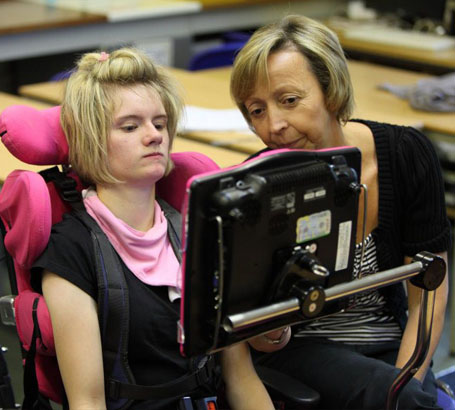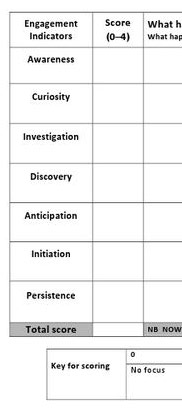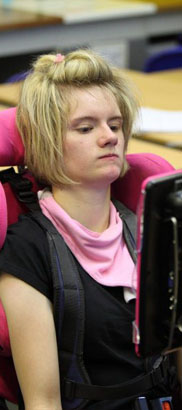
Assessment is a multi-faceted tool. To be comprehensive, it needs to include
a variety of information sources and perspectives. Even an assessment with
limited scope, looking at only one part of a child's functioning, can have
implications for many different aspects of
their learning.
and Scale

The Engagement Profile and Scale is a classroom resource which enables
teachers to observe and document how engaged a child with CLDD
is in learning, as well as recording their progress.
It allows teachers to focus on a child's engagement as a learner and to
create personalised learning pathways.

Engagement is multi-dimensional and encompasses:
- Awareness
- Investigation
- Anticipation
- Initiation
- Curiosity
- Discovery
- Persistence
Profile and Scale (1)

These seven engagement indicators form the basis of the engagement profile and scale.
The Engagement Profile is carried out with a high-interest activity and the Engagement Scale is used with a child's low-interest activity.
The Engagement Profile and Scale are used to establish a baseline engagement assessment.
Repeated observation and engagement scaling is used to monitor the effectiveness of any subsequent intervention and to measure outcomes.
recent months.
Use the Engagement Profile to gain a clearer understanding of high-engagement activities and preferences, and low-engagement activities, identify clear targets and possible new teaching approaches.
Use repeated measures to monitor progress.
Identify multidisciplinary perspectives relevant to the child and include their perspectives and assessments, for example, speech and language therapist structured assessment, and occupational therapist common language frameworks.

You may need to consider any ways in which the child has regressed (where previous learning and skills appear to be lost).
If this is so, can you identify possible causes?
Reflect on this assessment.
Does it tell you anything about the child's learning patterns?
Are you able to identify any trends?
Are you able to form any hypotheses about future learning needs?
